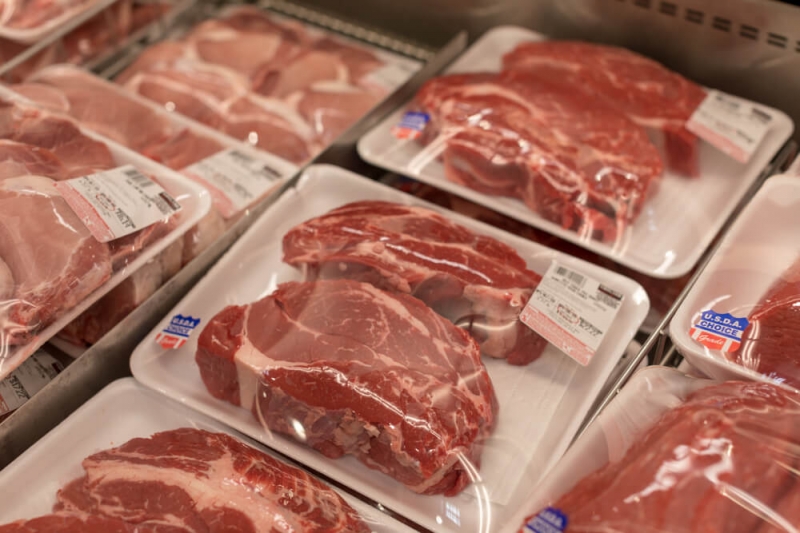 Grocery store prices for meat are declining after their springtime coronavirus surge, but more slowly than expected, meaning that shoppers will pay noticeably more at the meat counter this year than in 2019, said USDA economists. In the monthly Food Price Outlook, the USDA forecast meat prices will rise 6.5% this year, more than double their usual rate.
Grocery store prices for meat are declining after their springtime coronavirus surge, but more slowly than expected, meaning that shoppers will pay noticeably more at the meat counter this year than in 2019, said USDA economists. In the monthly Food Price Outlook, the USDA forecast meat prices will rise 6.5% this year, more than double their usual rate.
Beef and veal would cost, on average, 9% more this year than in 2019, before the pandemic. For the year, pork prices would be 5.5% higher and prices for poultry, the most widely consumed meat, would be 4.5% higher than the 2019 average.
Stubbornly high meat prices prompted the USDA to forecast food inflation of 3% this year, the highest rate since 3.7% in 2011. It was the second increase since the pandemic hit. Food inflation, which combines groceries and so-called food away from home, such as restaurant meals and takeout, tends to track the overall U.S. inflation rate. Food prices have risen an average of 2.3% a year for the pa.t two decades.
"Meat prices have continued to decline but the pace at which they are declining is not fast enough to achieve average 2020 prices below pre-COVID-19 levels," said the USDA. "For example, beef and veal prices decreased 8.2% from June to July 2020 and another 4.6% from July to August 2020, but year-to-date prices are still 10.5% above average 2019 prices."
"Slaughterhouses have recouped much of the lost slaughter capacity that occurred as a result of the pandemic, and prices are expected to continue to decrease through 2020. However, they will likely decrease at a slower rate than they did this spring," said the Food Price Index. The USDA forecasts lower average prices for cattle, hogs, and broiler chickens this year due to the coronavirus, which forced slowdowns and temporary closures of some large packing plants in the spring, and the accompanying economic recession.
According to the Consumer Price Index, calculated by the Labor Department, food prices are 4.1% higher than they were a year ago. Retail beef prices were 9.6% higher than the previous August, according to the CPI report release on Sept. 11. The overall U.S. inflation rate was 1.3% in the 12 months ending in August. The CPI compares changes in prices from month to month. The USDA compares average prices in one year with averages from the previous year.
Source: agriculture.com.

